Submitted by WA Contents
Opinion:Metropolis Mayhem | Libeskind’s Yongsan Masterplan Is A Kingdom Of Chaos And Contradiction
United Kingdom Architecture News - Nov 20, 2013 - 21:08 8240 views
In many ways, the extraordinary developments underway in the South Korean city of Seoul are unsurprising. Asian developers have long harnessed the Big Name architects of the West to add creative know-how and a marketable "starchitect" label to their burgeoning commercial and retail portfolios.
The Yongsan Business District, christened "Archipelago 21," represents a natural progression of this rationale, escalating in scale and ambition to eye-popping levels. Covering an area of 40 million square feet, this could be the world’s largest mixed-use complex to be planned in a single leap—and the difficulties of such a gargantuan task are clearer than ever in the recently released visuals of this newborn skyline.
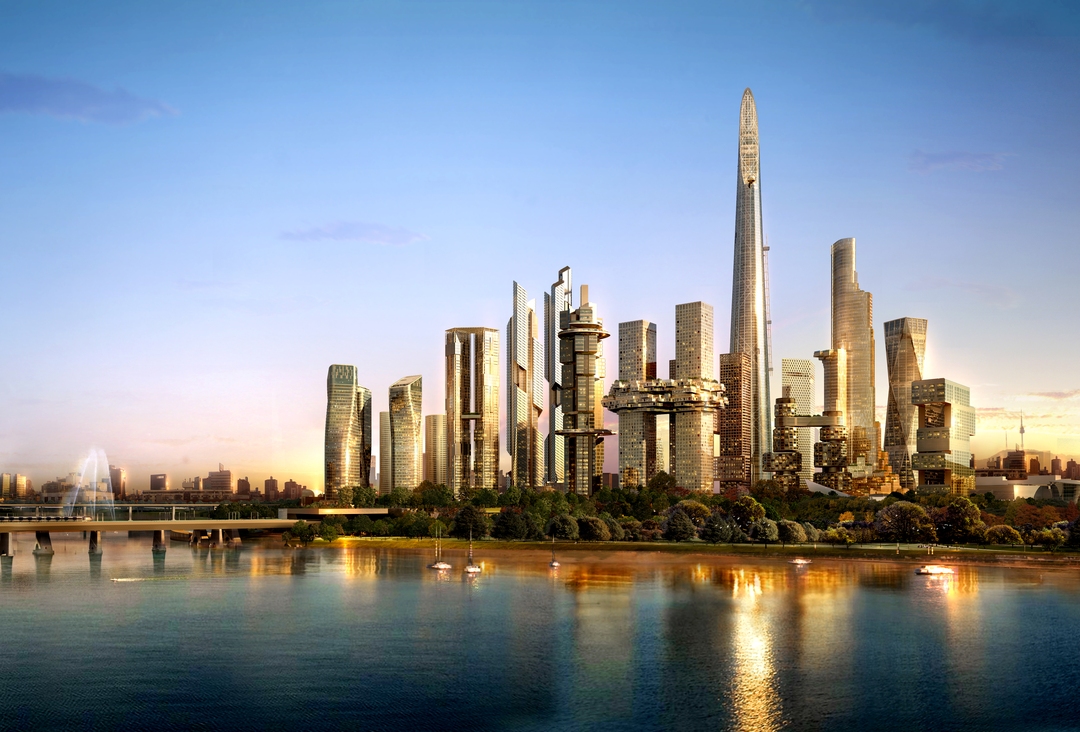
A rendering of Archipelago 21, via Studio Daniel Libeskind
Studio Daniel Libeskind won an international design competition 2005, beating four other firms:Asymptote, Foster + Partners, the Jerde Partnership and Skidmore, Owings & Merrill (SOM). When asked what set his scheme apart from his competitors, Libeskind responded with typical poetic flourish, “The approach is about human beings. It starts with human scale, with human imagination. It doesn’t start with abstraction.”
Looking at the forest of skyscrapers—due for completion on the bank of the River Han by 2026—the "human scale" that Libeskind refers to is incredibly hard to make out at first glance. The conditions at ground level, with the populous moving like ants between the pieces of an enormous, glittering chess set, will be crucial to the success or failure of the development; much will depend on the distribution of commercial and retail uses throughout the district, and the jury will be out on that until at least the late 2020s.
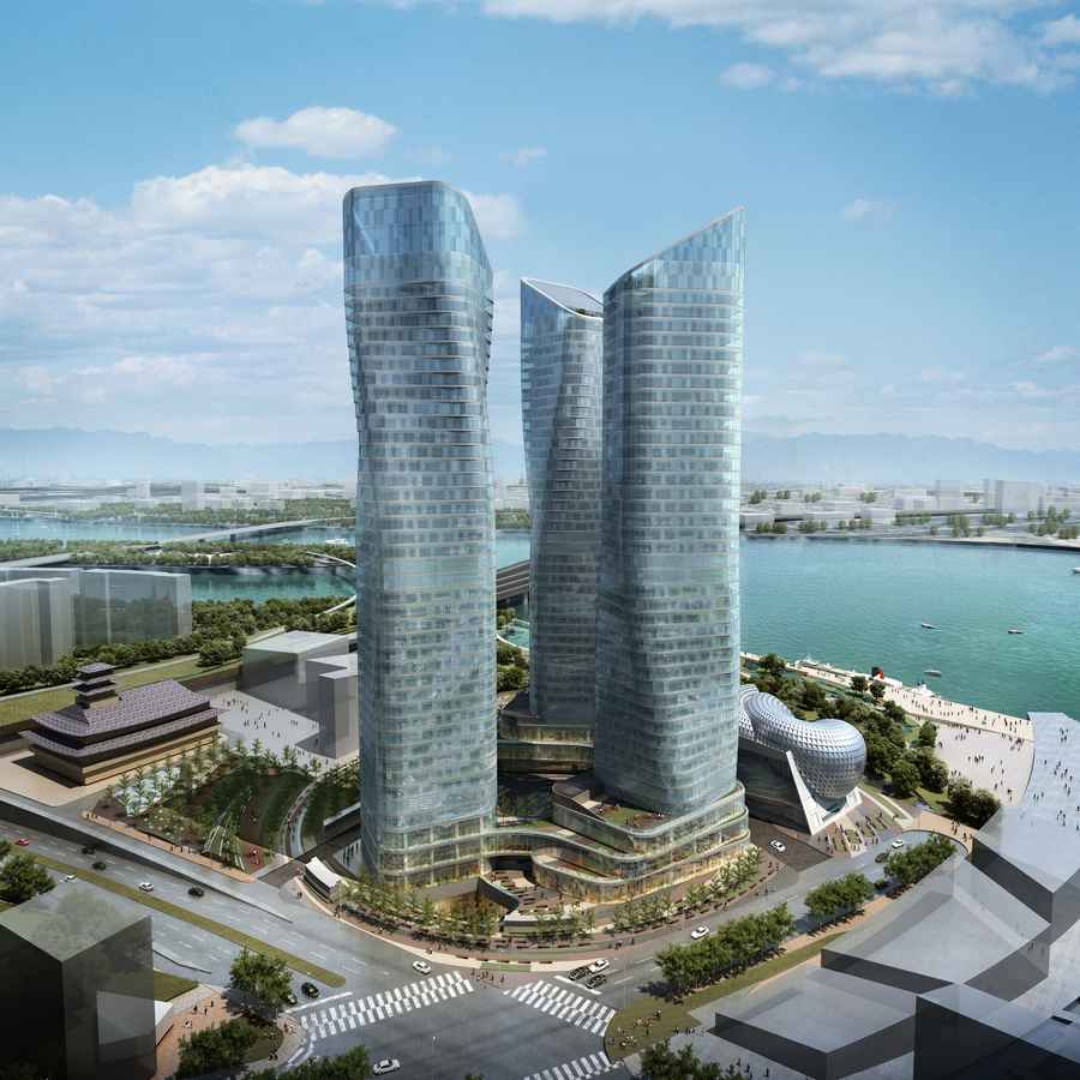
Libeskind's Dancing Towers
In typical fashion, Libeskind peppered his original pitch with metaphors: Archipelago 21 is conceived as “a series of islands, each one representing a different neighborhood.” A closer examination of certain schemes—particularly those by BIG, REX, and MVRDV—does reveal some intriguing approaches to the notion of vertical "neighborhoods" higher up the towers. Each has shifted floor plates and manipulated the conventional block to provide a series of open spaces not normally allowed for in the high-rise typology.
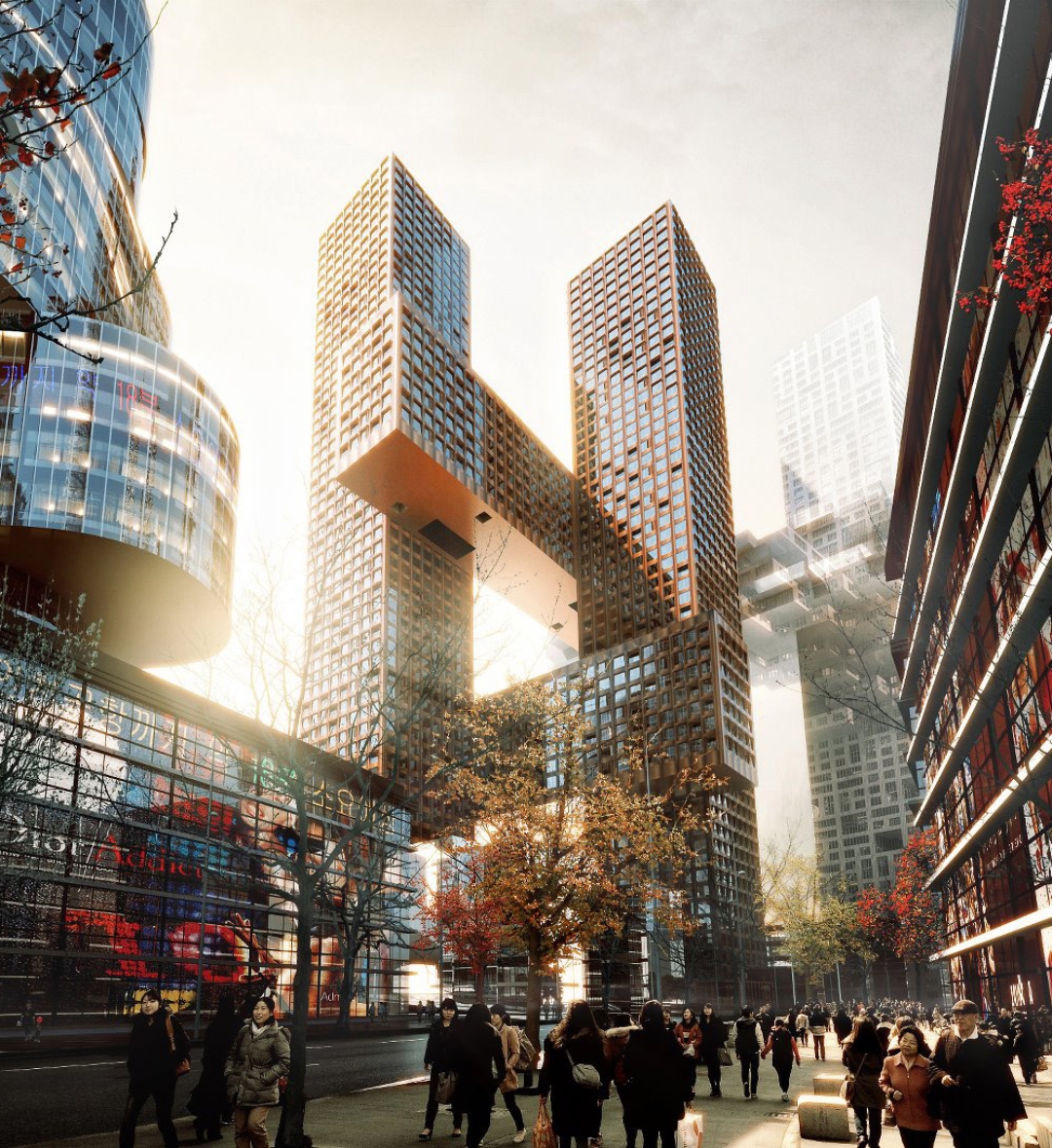
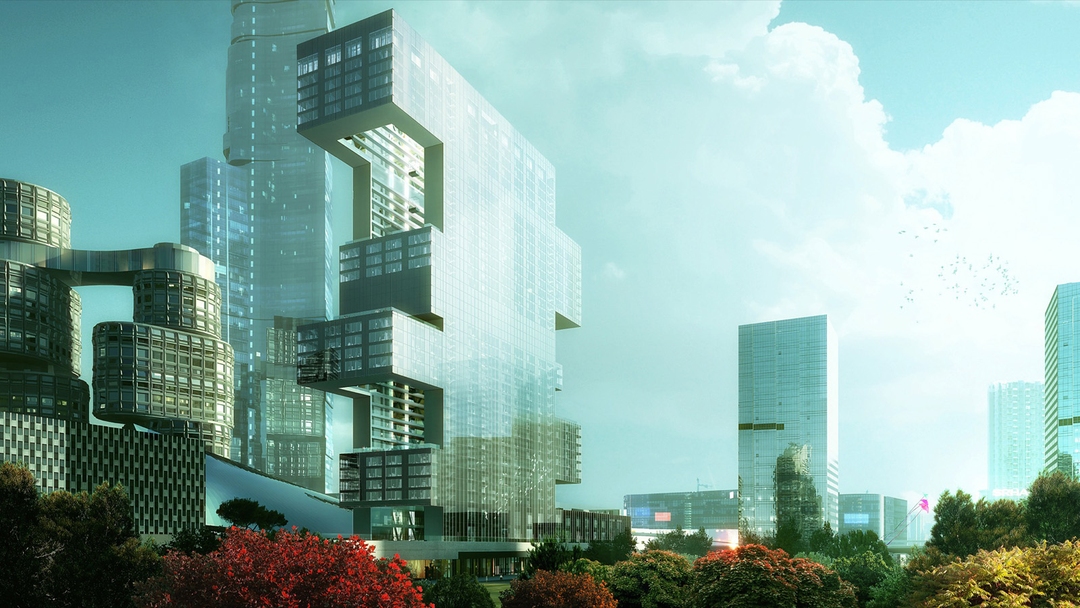
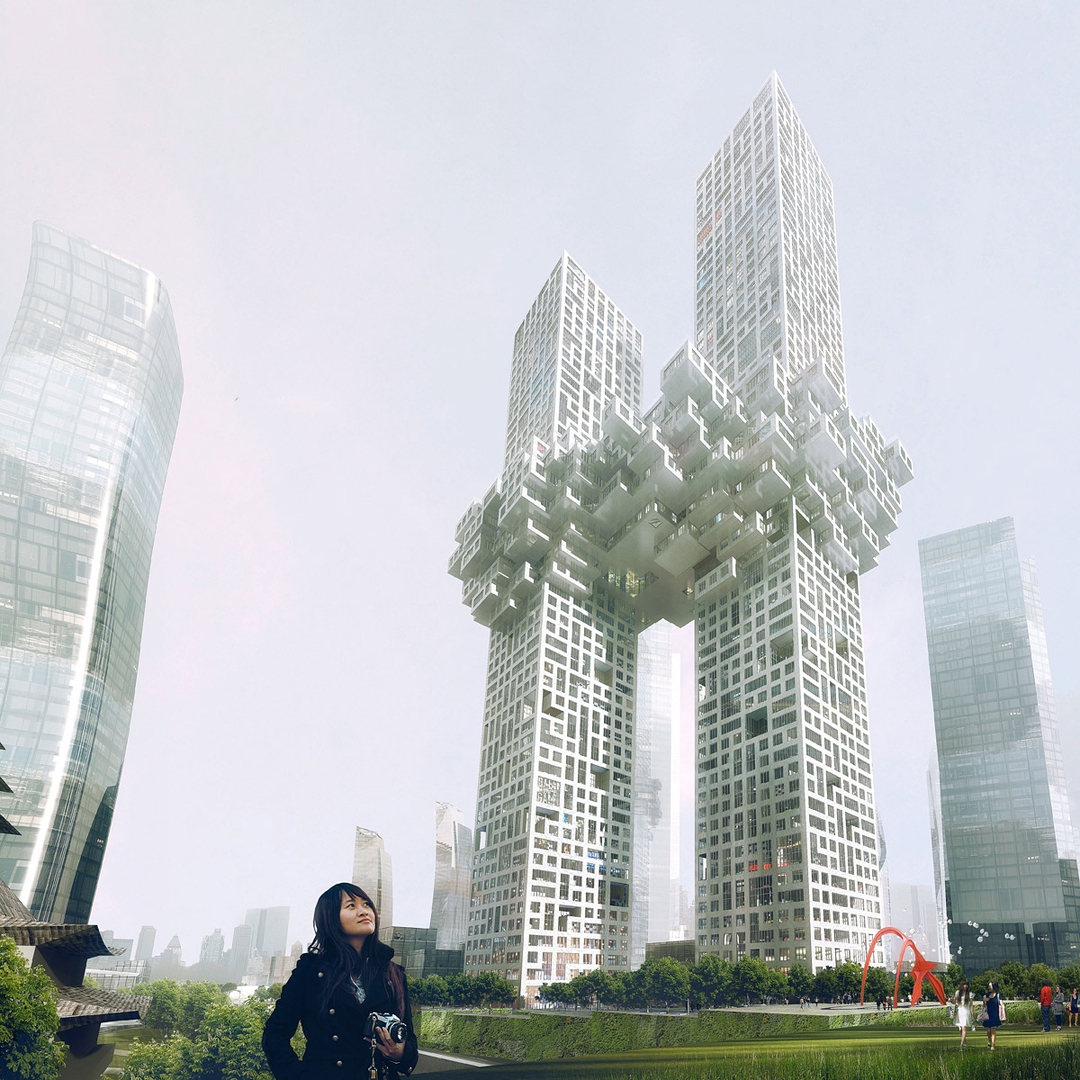
From top: Cross Towers by BIG, Project 6 by REX, and The Cloud by MVRDV
Other firms—Libeskind, SOM, Renzo Piano—have opted for set-piece, formalistic structures, and taken individually, they have merit to varying degrees. However, zoom out to view the collection as a whole, and the conflict becomes all too apparent.
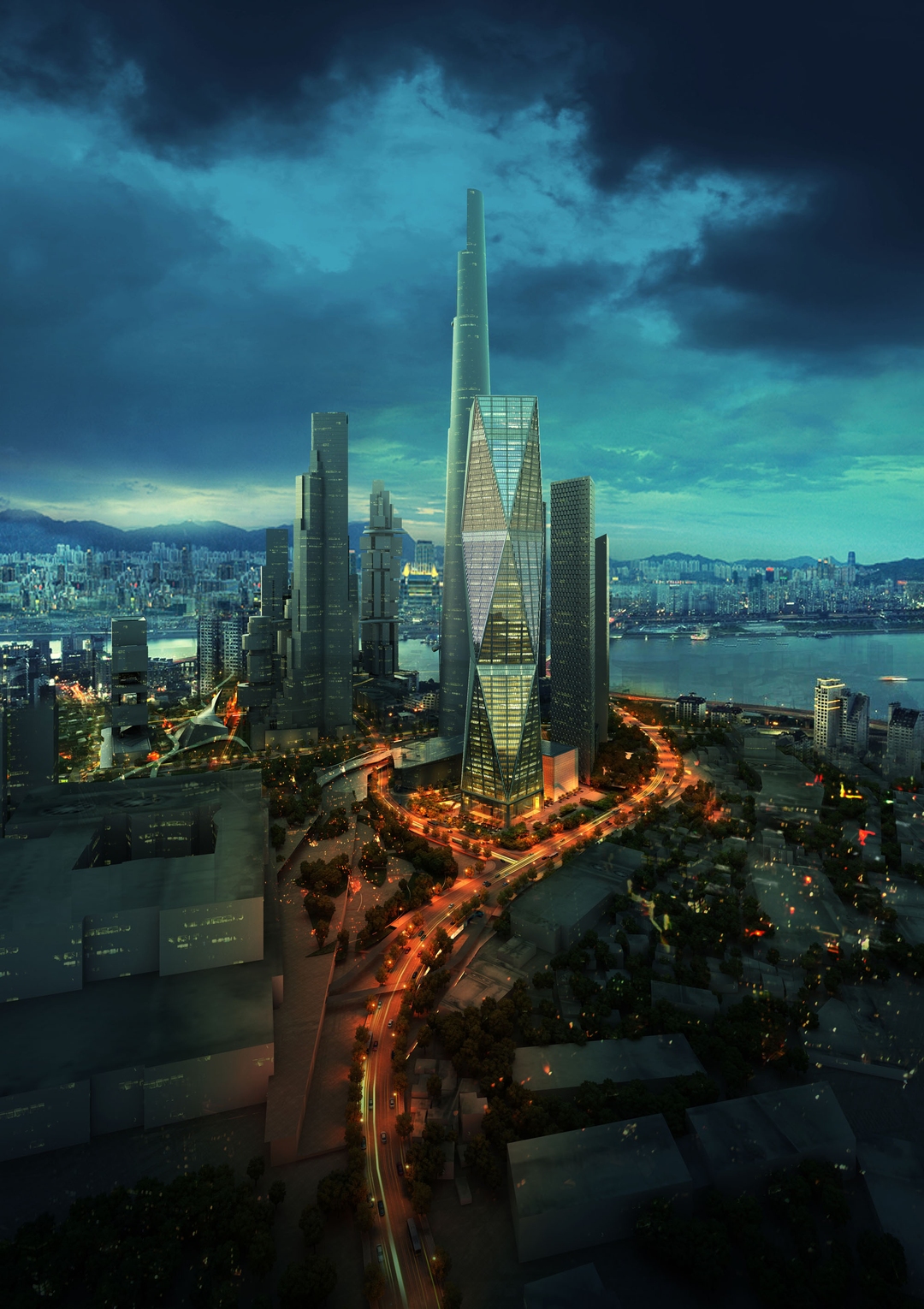
SOM's Diagonal Tower
Libeskind has emphasized how lucky he was to have a client who “cares about architecture” and about creating a “cohesive, poetic idea.” Cohesive? One has to wonder whether Libeskind, or any of the other firms involved in this star-spangled master plan, have ever looked up the definition of the word. The skyline reads as a chaotic cluster of disparate entities: It is as if the architects of each firm worked in complete isolation from one another, concocting buildings entirely ignorant of the context being dreamt up concurrently on every site surrounding their own.
The proposed names of many structures within the complex tell a story in themselves: "The Cloud," "The Blade," "Dancing Dragons," "The Dancing Towers," "Harmony Towers." … These buildings are crying out to be icons, demanding to be the focal point, the landmark which becomes synonymous with the identity of the city and its people. (Think of the Eiffel Tower, the Sydney Opera House, the CN Tower.)
For the towers of Yongsan though, there appears to be a vital problem: each form fights against the next, resulting in an architectural cacophony that is strangely prosaic when viewed as a collective entity. Banality within architecture is often represented by suburbia, packed with the pastiche-laden visions of contrived dreams. Perhaps the banality of the 21st century has arrived in the most unexpected of places: Within a tidal wave of steel and glass icons.
by The Angry Architect
> via Architizer
